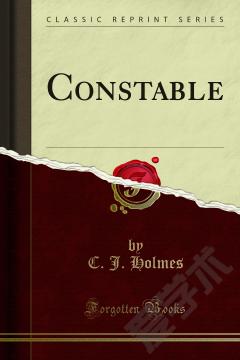Constable
Leslie's admirable biography must always remain the great authority on Constables personal history, yet no book, however accurate and sympathetic, which dates from the forties, could foresee the enormous change which has taken place in landscape painting since Constables death. Whatever his responsibility for the artistic revolution with which his name is associated. Constable undoubtedly stands at the parting of the ways between the old masters and the moderns, for he was the first to prove that a landscape might be a good picture, and also be really like nature. The aim of his great predecessors had been to make noble compositions, with just as much resemblance to nature as was convenient The aim of his successors has been to get a sincere likeness to nature, while pictorial quality seems too often to be regarded as a subordinate matter.Since the excellence of Leslie's work renders any lengthy detailed biography unnecessary, the main facts of Constable's life are here dealt with in a short introduction, while the chief part of this little book has been devoted to supplementing Leslie on the technical side by tracing Constables connection with his predecessors, by describing the development of his painting, and of giving a brief account of the evolution of Modem Landscape in England and on the Continent.I have to thank Mr. G. A. Phillips for kindly allowing me to reproduce the charming picture in his possession, and Mr. Augrustin Rischgitz, whose beautiful photographs, specially made for this work from a series of Constable's sketches at South Kensington, form the greater part of (he illustrations.
{{comment.content}}








 京公网安备 11010802027623号
京公网安备 11010802027623号